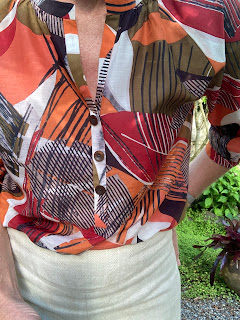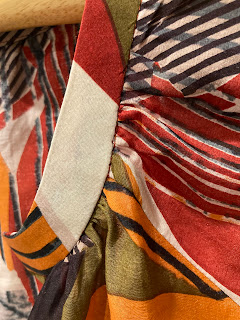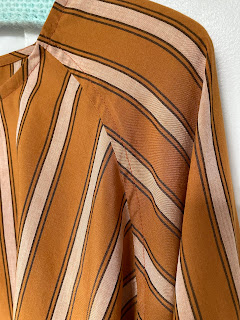I'm a fan of Sewing Revival Patterns by Kiwi designer Janine. I had Mapua shorts on my wish list for a while, then a friend made these Classic Shorts so that tipped the decision.

(Final garment above.)
Janine's patterns are usually pretty straight forward, and I have made a few; Fantail, Kingfisher and Heron Tops, Snug and Sidewinder pants, and the Nikau and Stitchbird dress - Phew! These patterns were my first foray into digital patterns.

(Final garment above.)
About the Classic Shorts. I made S12. When finished, the sizing, which has never been an issue, was voluminous.
Fabric: I made these from pants which my husband bought for me on a work trip to Thailand. I alway loved the fabric, but as a Kiwi woman, 175cm tall, clothes made in Asia, by and large, are always a little bit problematic.
I love wearing shorts. It tells me it is good weather, and I am not at work. They are practical, and I like the fun of being a woman in her late 50s still wearing shorts.
But these, to be frank, just felt big. Too big. Baggy in the bum, and the side seams sat about 1" behind the my side waist. I wanted to make another pair, and had/have some leftover fabric earmarked. So I decided to cut a size smaller. I checked my measurements again versus the pattern sizing. I should be a size 12? But I decided to cut a S10.
I get my patterns printed on A0 at my local copy shop. If the patterns are layered I usually get a size up and a size down printed - this I find so much better than having all sizes printed. Then I draft onto frost cloth, or inexpensive vilene from the local emporium. So I traced and cut out a S10 front and back. Then I got my band and laid it onto the A0 sheet. Hang on! I had cut a size 16! Ah ha. No wonder they felt so large.
My second pair are still in the queue. Meantime I have re-sized. I took 1/2" from the front inner leg seam, and 1" from the back inner leg, and raised the hem by 1". I like the feel of the re-sized version way better. Live and learn!
The S16:










































